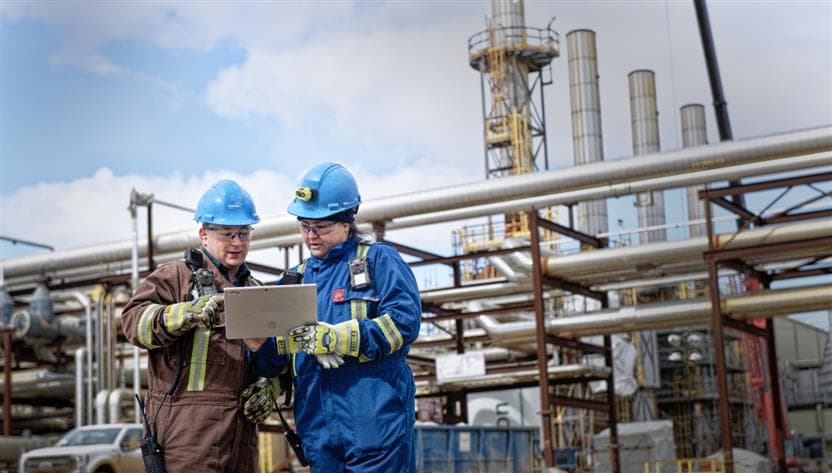All of our oil sands facilities use cogeneration which is a natural gas-fueled process that produces both industrial steam and electricity. Cogeneration has the lowest GHG emissions of hydrocarbon-based power generation.
Our cogeneration facilities were initially developed to provide steam and electricity for our oil sands assets. Our cogeneration portfolio and investments make us one of the largest and most carbon-competitive independent power producers in Alberta by generation capacity. Across our operations, we have working interest in approximately 1,400 megawatts (MW) of cogeneration capacity, increasing our revenue and providing low-carbon energy to consumers.
Cogeneration
Cogeneration improves the efficiency of our oil sands business. By producing both industrial steam and electricity through a natural gas-fueled process, cogeneration is the lowest GHG-intensive form of hydrocarbon-based power generation.
All our oil sands facilities use cogeneration, and the GHG intensity of the power produced from our cogeneration units is approximately 75% lower than coal-fired power generation.
We’re replacing the coke-fired boilers at our Oil Sands Base Plant with cogeneration units and anticipate the cogeneration facility to be commissioned in late 2024. In addition to providing the facility with steam needed for our operations and reducing direct GHG emissions at the plant, the cogeneration units will export up to an additional 800 megawatts (MW) of electricity to the provincial grid. When operational, the project will reduce GHG emissions by approximately 5.1 megatonnes (Mt) per year in Alberta and will make us one of the largest power producers in the province.
Petro-Canada’s Electric Highway™
Canada’s Electric Highway™, the coast-to-coast network of fast-charging electric vehicle stations across Canada. Spanning 6,300 km, from Halifax, NS to Victoria, BC, the 57 Petro‑Canada EV fast chargers are located every 250 km or less, in close proximity to the TransCanada Highway.
Each station features DC fast chargers with universal CHAdeMO and CCS/SAE connectors (these acronyms will make sense to all you EV drivers out there). The chargers provide maximum power up to 100 kW (CHAdeMO) and 350 kW at most locations (CCS) – enough to provide an 80 % charge or more to most EVs in less than 30 minutes.
A history in renewable power
We have been a sustainability leader for more than 20 years and played a pivotal role in developing the Canadian renewable power industry.
In 2002, Suncor partnered with Enbridge to build one of the first renewable energy projects in Canada and since then, our company developed eight wind power projects in three provinces – Saskatchewan, Alberta and Ontario.
In 2022 and early 2023, we sold our wind and solar assets to focus ESG efforts in other areas complementary to our core business such as power, renewable fuels and hydrogen. We will continue to be a leader and influencer in the energy transition.





